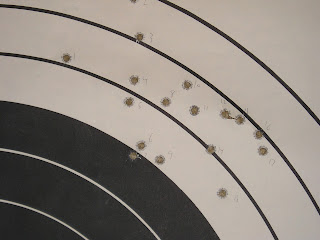I picked up a book devoted to the Trapdoor Springfield in 45-70. There was also a short lived trapdoor in .50 and others exist that were not US military, but they are not included in the book. The book is rich in info including sights and their function, various loads, history, trigger dressing, etc.
You can find it here: http://www.the45-70book.com/
It is looking like I’ll need to be reloading in order to get any accuracy out of the thing. I’m slowly gathering the things I need; powder, primers, bullets of every type and size imaginable. My father had a reloading press that is older than dirt. What could be better for this project? The Lyman Tru-Line Jr is outdated and won’t take modern dies, but at free, how could I refuse. A little time on Ebay and I had a new turret on the way to fit new dies. Midway USA
 |
Lyman Tru-Line reloading press with a turret for modern dies.
One immediate help from the book is I discover the rear sight is installed upside down. This may sound odd, but it easier to do than you think and it actually works fairly well inverted. Anyway, I fix that and also built a new raised front sight by soldering a blade onto a front sight shroud. It lets me find a setting on the rear sight that will be dead on at 100 yards. The old front sight is still there, so I can go ahead and raise the rear sight ladder to take those 1600 yard shots if I feel like it. Of course, that gives me a roughly 128 inch diameter group, not counting wind. Hmm.





